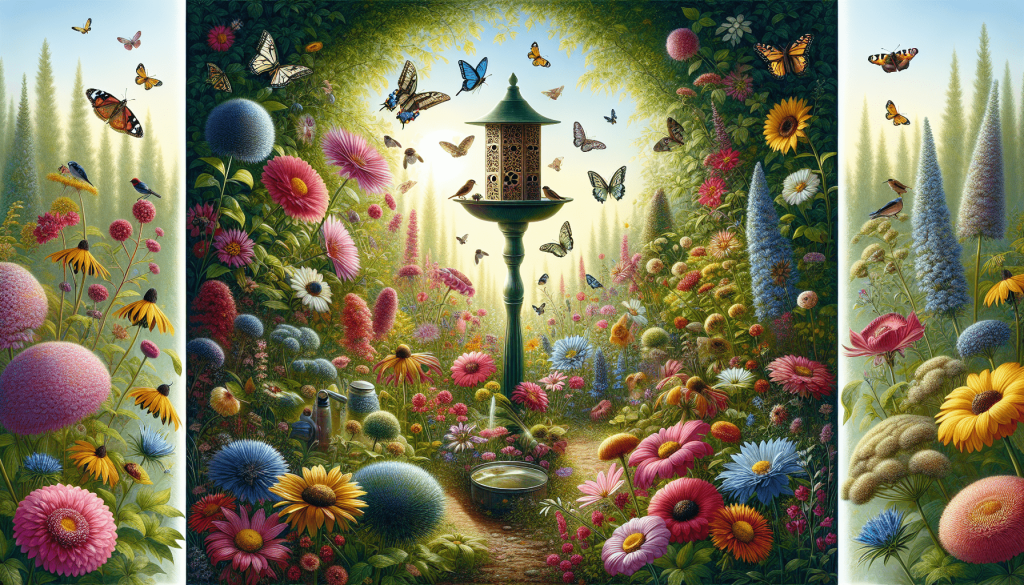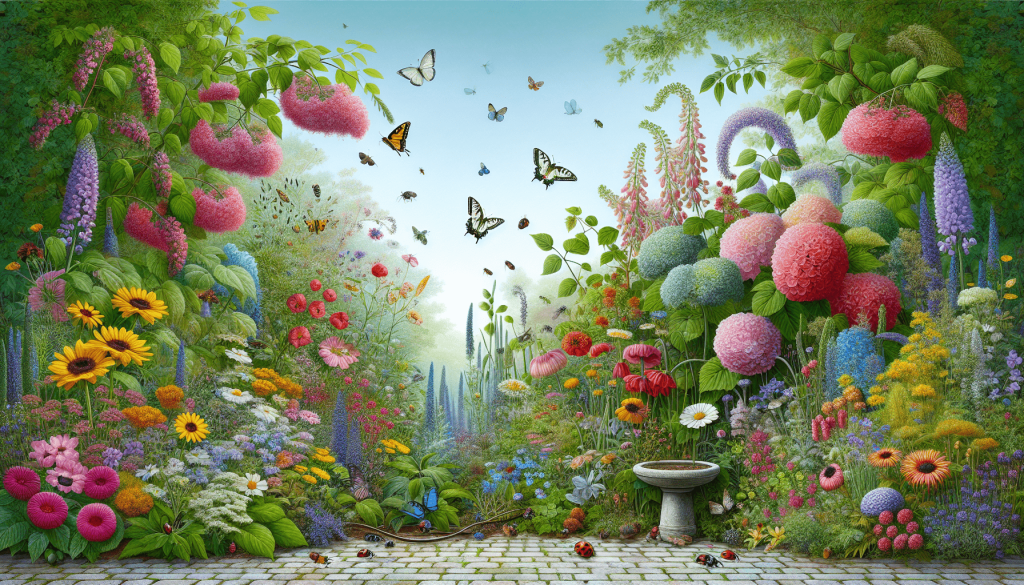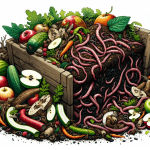This post may contain affiliate links. As an Amazon Associate, we may earn commissions from qualifying purchases.
Have you ever wondered how you can turn your garden into a sanctuary for beneficial insects and wildlife all year round? It’s a rewarding endeavor that not only beautifies your space but also contributes positively to the local ecosystem. Creating such a haven requires mindful planning and thoughtful plant selection, but with some guidance, you can transform your backyard into a vibrant habitat that thrives in every season.
Understanding the Role of Beneficial Insects and Wildlife in Your Garden
Your garden ecosystem thrives when a diverse array of beneficial insects and wildlife are present. These critters serve as pollinators, predators of pests, decomposers, and indicators of environmental health. Recognizing their roles will help you create a supportive environment that ensures their continued presence in your garden.
The Importance of Pollinators
Pollinators, like bees, butterflies, and some birds, are essential for the reproduction of many plants. They assist in the transfer of pollen from one flower to another, enabling fruit and seed production. Without them, many of the plants and crops we rely on would be unable to reproduce, leading to a decrease in food sources for both humans and wildlife.
Predators as Natural Pest Control
Gardens often face pest challenges, but beneficial insects like ladybugs, lacewings, and spiders help control these populations naturally. Promoting the presence of these predatory species reduces the need to use chemical pesticides, which can harm non-target organisms and disrupt environmental balance.
Decomposers for a Healthy Soil
Insects and microorganisms, such as earthworms and fungi, play a crucial part in breaking down organic matter. They improve soil health by recycling nutrients, promoting healthy plant growth, and enhancing soil structure.
Planning Your Garden for Year-Round Support
Designing a garden that attracts and sustains beneficial insects and wildlife involves careful planning. Consider factors like plant selection, garden layout, and habitat features that cater to different species.
Conducting a Site Assessment
Begin by assessing your garden’s current conditions. Understand your soil type, light availability, drainage, and existing plant life. This information will help you choose suitable plants and design elements that support both the growth of plants and the wellbeing of insects and wildlife.
Selecting Native Plants
Native plants are adapted to local climate and soil conditions, making them ideal candidates for a sustainable garden. They provide food and habitat for local wildlife, including insects adapted to these plants over time. Integrate a variety of native species to cater to different dietary and habitat preferences of the local fauna.
Designing Diverse Plant Layers
Create a garden design that features multiple plant layers, including groundcovers, shrubs, and trees. This diversity mimics natural habitats by providing various niches for wildlife and contributes to a balanced ecosystem.
Providing Continuous Blooms
To attract pollinators year-round, ensure that there are flowers in bloom throughout each season. Mix early, mid, and late-season bloomers so there is always a food source available. Below is a table of example plants by bloom season:
| Season | Example Plants |
|---|---|
| Spring | Crocus, Bluebells, Daffodils |
| Summer | Lavender, Sunflowers, Coneflowers |
| Autumn | Aster, Sedum, Goldenrod |
| Winter | Holly, Winter Camellia, Witch Hazel |

Enhancing Habitat Features
Incorporate features that provide shelter, water, and food for wildlife. These elements are crucial for attracting and sustaining populations of beneficial insects and wildlife.
Creating Shelter and Nesting Sites
Incorporate various structures and materials in your garden to offer shelter and nesting opportunities. Birdhouses, bat boxes, log piles, and rock gardens give different species places to roost or raise their young. Don’t forget the benefit of maintaining natural brush piles or hedge areas, as they can quickly become microhabitats for many species.
Establishing Water Sources
Water is a critical resource for wildlife. Install birdbaths, small ponds, or simple water features to provide a consistent source of hydration. Ensure these water sources are shallow or have varied depths to accommodate different species comfortably, and keep them clean to prevent the spread of disease.
Maintaining Food Supply
While your plants provide much of the necessary food, supplement with additional resources like bird feeders filled with seeds and nectar sources for hummingbirds. This added nutrition is especially important during colder months when natural food is scarce.
Managing the Garden Naturally
Adopt sustainable garden practices that support the ecological balance and avoid harming your beneficial occupants.
Avoiding Chemical Pesticides and Fertilizers
Chemical fertilizers and pesticides can be harmful to many beneficial insects and wildlife. Employ integrated pest management techniques to address pest issues without the adverse effects of chemicals. Composting can enrich your soil naturally, reducing the need for synthetic fertilizers.
Encouraging Natural Pest Control
Persevere learning about the life cycles of pests and their natural predators. By understanding these dynamics, you can intervene less and let natural predator-prey relationships maintain balance. Ladybugs and parasitic wasps are examples of helpful allies in the fight against aphids and other pests.
Practicing Responsible Garden Clean-Up
In the autumn and spring, practice mindful clean-up to leave some natural habitat undisturbed. Leaves, plant stalks, and other debris can provide overwintering sites for insects. Delaying comprehensive clean-ups until temperatures rise in the spring can ensure these important garden assistants are not inadvertently destroyed.

Engaging with Your Garden Community
A garden designed for beneficial insects and wildlife offers more than beauty and ecological contributions—it can bring communities together and inspire others.
Educational Opportunities
Use your garden as an educational tool for neighbors, friends, and family. Host garden tours or workshops to share how simple changes can foster biodiversity. Engaging others can inspire collective action in gardening for pollinators and wildlife.
Citizen Science and Monitoring
Participate in citizen science projects that track local insect and wildlife populations. Organizations often have programs that allow you to report sightings or engage in counting events. Your garden can contribute valuable data points that aid conservation efforts.
Conclusion
Designing a year-round garden supportive of beneficial insects and wildlife is an enriching experience that promotes environmental health and personal enjoyment. By selecting native plants, creating diverse habitats, and adopting natural maintenance practices, you ensure your garden becomes a vibrant oasis celebrating biodiversity. Take a moment to sit, observe, and enjoy the buzz and flutter of life that fills your thoughtfully crafted sanctuary, knowing each element plays a pivotal role in the natural world.








